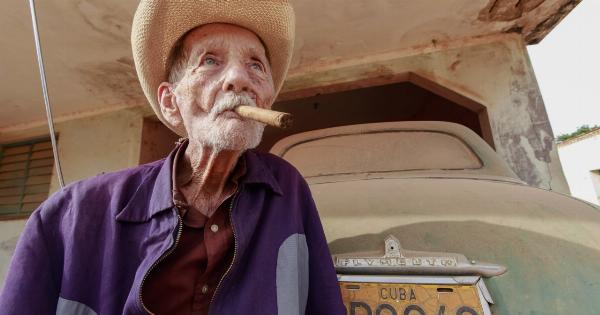Secondhand smoke, also known as passive smoking or environmental tobacco smoke, refers to the air that is breathed in by non-smokers when individuals around them smoke.
This poses a substantial risk to the health of non-smokers, who may involuntarily inhale tobacco smoke and all of its harmful contents. Secondhand smoke contains over 7,000 chemicals, many of which are known to be toxic and can cause cancer and other diseases. According to the World Health Organization (WHO), over 1.2 million deaths are attributed to secondhand smoke each year.
The Dangers of Secondhand Smoke
The dangers of secondhand smoke are well-documented. Breathing in secondhand smoke can lead to various health problems, including:.
- Lung cancer
- Heart disease
- Respiratory infections
- Asthma exacerbations
- Sudden infant death syndrome (SIDS)
- Stroke
- Low birth weight
Non-smokers who are exposed to secondhand smoke are at increased risk of developing these health problems, particularly if they are exposed to it on a regular basis.
The risks are even greater for children, pregnant women, and individuals with pre-existing health conditions.
Where is Secondhand Smoke Found?
Although secondhand smoke is most commonly associated with cigarette smoking, it can also come from other sources, such as cigars, pipes, and electronic cigarettes. Secondhand smoke is found in places where smoking occurs, such as:.
- Homes and cars of smokers
- Outdoor areas where smoking is allowed, such as parks and patio restaurants
- Workplaces, restaurants, and bars where smoking is allowed
Even in places where smoking is banned, such as public indoor spaces, secondhand smoke can still be found. This is because tobacco smoke particles can cling to surfaces and remain in the air for hours after a cigarette has been smoked.
How to Protect Yourself from Secondhand Smoke
The best way to protect yourself from secondhand smoke is to avoid areas where smoking is allowed. This includes outdoor settings where smokers are present and indoor areas where smoking is permitted.
If you are in a situation where you cannot avoid exposure to secondhand smoke, there are steps you can take to reduce your risk:.
- Sit in the non-smoking section of restaurants
- Avoid areas where smoking is allowed, such as bars and casinos
- Ensure that your workplace has a smoke-free policy in place
- Avoid spending time with people who smoke
- Avoid smoking in your car or home and ask others not to smoke around you
The Benefits of Quitting Smoking
If you smoke, quitting is the best way to protect both your own health and the health of those around you.
Quitting smoking can reduce your risk of developing many of the same health problems associated with secondhand smoke, such as lung cancer, heart disease, and respiratory infections. It can also improve your quality of life by reducing your risk of premature death and improving the health of your respiratory system.
Quitting smoking can be challenging, but it is possible. Many resources are available to help smokers quit, including nicotine replacement therapy, counseling, and support groups. Even if you have tried to quit before and failed, don’t give up.
Each attempt brings you one step closer to success.
Conclusion
Secondhand smoke is a serious public health issue and poses a significant risk to the health of non-smokers.
It is important to take steps to protect yourself and your loved ones from secondhand smoke by avoiding areas where smoking is allowed and encouraging smokers to quit. If you are a smoker, quitting is the best way to reduce your own risk of developing health problems and protect the health of those around you.


























